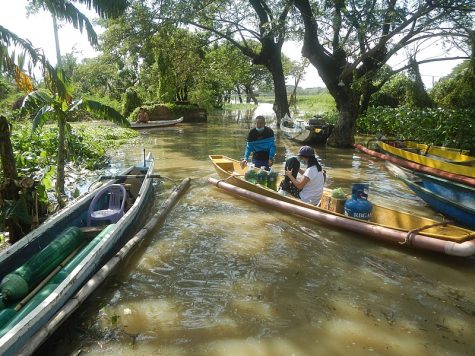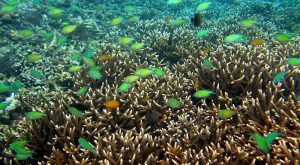The Impacts of Climate Change on the Philippines
Super Typhoon Surigae, global warming, and their effects on the Philippines
NASA, Public domain, via Wikimedia Commons
Super Typhoon Surigae as it passes the Philippines on April 16th, 2021.
The first super typhoon of 2021 has swept past the Philippines. With up to 190 mph winds, Super Typhoon Surigae peaked two Saturdays ago on April 17th. At its height, the typhoon was the equivalent of a category 5 hurricane. Though the worst of the storm did not make landfall, it is the strongest recorded tropical cyclone in the Northern Hemisphere during the month of April. A super typhoon of this intensity has never been seen this early in the calendar year. According to the Philippine Atmospheric, Geophysical, and Astronomical Services Administration (PAGASA), typhoon season in the Philippines lasts from May to October and peaks starting in July. Each year during this period, an average of twenty tropical cyclones enter the region. Of those twenty, eight to nine cross the Philippines.

Surigae has displaced over 100,000 Filipinos during the pandemic. The strong winds and rains of the passing storm have caused at least twenty-two villages to flood and power outages in four provinces. In the eastern Bicol region, five provinces were evacuated. However, taking proper evacuation measures during the pandemic has been difficult. Even more evacuation centers have had to open up to maintain social distancing. Ann Gemma Ongjoco, mayor of Guinobatan, has reported that churches are being used to shelter more than 6,100 in her town.
Beyond the coronavirus, this super typhoon is linked to another danger: climate change. In 2021, the Philippines was ranked number four on the long-term Climate Risk Index (CRI), making it one of the top ten most affected countries by climate change from 2000 to 2019. The index takes into account the number of extreme of extreme weather events, the number of fatalities as result of these events, and losses in GDP of each country. With over 7,000 islands, the Philippine archipelago is also more vulnerable to rising sea levels. According to the Climate Reality Project, sea levels in the Philippines are rising about twice the rate of the global average. This is exacerbated by typhoons, such as Surigae, as storm surges are able to reach even greater heights. Additionally, with warmer waters, these cyclones are growing stronger and more frequent. The National Integrated Climate Change Database and Information Exchange System (NICCDIES), lists even more possible impacts, including: “annual losses in GDP, changes in rainfall patterns and distribution, droughts, threats to biodiversity and food security, public health risks, and endangerment of vulnerable groups such as women and indigenous people”. NICCDIES also projects that if the average of rate of sea level rise continues, an estimated 13.6 million Filipinos would need to relocate.

Concerned by these issues, a recent graduate of William and Mary and native of the Philippines, Josh Panganiban, has co-founded the company Data Science for Sustainable Development (DSSD) to provide “technical services to nonprofits, government agencies, and NGOs with limited technological resources and capacity.” From his own experience, Panganiban says that the effects of climate change are hitting the coral reefs of the Philippines the hardest. Coral bleaching has hurt tourism, an industry that a large portion of the country relies on for income. Panganiban also emphasized the importance of environmental and culture conservation in the Philippines: “An estimated 85% of the country’s key biodiversity areas are within ancestral domains…The primary factors that threaten these areas and erode the role of indigenous leadership in conservation are habitat loss and degradation; erosion of traditional governance–including loss of cultural links, traditional knowledge, and/or management practices; unstainable tourism; and poorly planned infrastructure development.”




